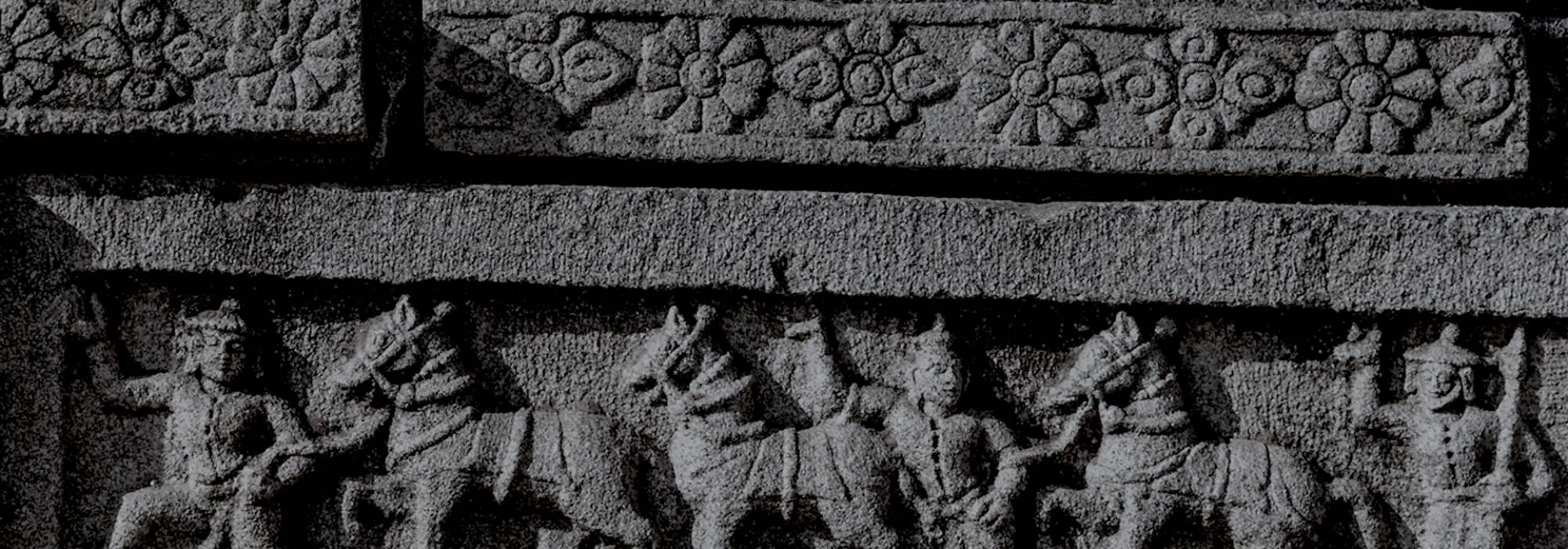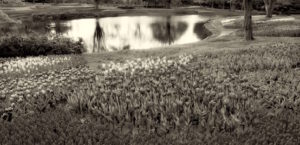If Krishnadevaraya enjoyed a whole range of exalted honorifics like Sahitya Sangita Samarangana Sarvabhouma, Mooru Rayara Ganda, Hindu Samrajya Suratrana, Kannada Rajya Ramaa Ramana, and Andhra Bhoja, it was because he had earned them literally by his blood and sweat—not for him were tears. He was endowed with manliness in the truest sense of the word and thereby inspired it throughout his kingdom. He equally earned material wealth on an unprecedented scale and shared his munificence through his jaw-dropping generosity.
The Perfumed Empire of Krishnadevaraya
Apart from the jewel markets and the opulent home constructions of his citizens, one prime organ of his state policy was to facilitate the unimpeded import of perfumes from alien shores. This was for a simple reason: his citizens demanded an uninterrupted supply of an essential ingredient of their daily dressing: perfumes and flowers. Krishnadevaraya’s economic policy was based on the principle of plenty: not for him the Nehruvian policy of state-enforced scarcity or even worse, the misplaced sense of Gandhian austerity, which deprived people of the expression of the basic human impulse for beauty in its full material and outward exuberance.
[contextly_sidebar id="5JDvVOpfvkraNOZ9o5t6MYSbO7iIwrT4"]
And Krishnadevaraya practiced what he decreed as policy. His palace had a separate unit for making and storing various kinds of perfumes. Indeed, if there was any item of human use that could be made fragrant, it would be scented and then used. Perfumed fumes from incense sticks would waft from the windows of the homes of the people of his time. Even the streets would be sprinkled with perfumed water. Krishnadevaraya’s subjects drenched themselves and drowned in a vast array of redolence like musk, civet, camphor, saffron (kesari), sandalwood, rose water, and aloe-wood.
As if this wasn’t enough, they innovated the Kadamba perfume, a blend of two or more of the aforementioned ingredients and put it to a variety of uses. In that era, the Andhras had attained global renown for being expert perfume makers. During the later years of Mohammedan rule, while the Hindus largely forgot or abandoned the art of perfume-making, the Muslims took to it with relish and attained similar expertise.
People of our own time seem to be devoid of any sense of smell. We’ve lost the capacity to withstand intense perfumes: if we ever come across the perfume of pure Kasturi (Musk), our noses would bleed. Besides, if we want perfumes that badly, there’s always the Western-made arrack-smelling “scents” available aplenty in the market. And so, on the rare occasions of marriage, when rosewater or Ittar (or Attar) is offered, our fragile noses cringe in horror and we are content to sprinkle a few drops on our handkerchiefs, which we otherwise use to clean nasal mucus.
It’s because these people profoundly savoured fragrances that they had a natural and abiding love for flowers. We’ve already noted how each house had an expansive garden. They grew an astonishing variety of flowers and floral creepers for the sake of “prosperity.” And by “flowers,” one doesn’t mean non-fragrant flowers. Indeed, perhaps no other country on this earth can bestow upon us such a variegated bounty of flowers which are endearing to both the eyes and the nose. It’s for this reason that our ancients unequivocally rejected as worthless a “non-fragrant flower and a town without wise people.”
Indeed, there exist non-fragrant flowers which attract us by their sheer beauty. In our land, the lotus holds that kind of attraction with its spellbinding loveliness. Which is why innumerable poets have extolled its nonexistent perfume to mountainous proportions as a way of satiating themselves. They typically used to cherish, love and grow the Paadari, Jasmine, Double-Jasmine, Screwpine (flower), and Champaka in their gardens. Literary works of the period describe all of these and other varieties of flowers in rich detail, complete with the fragrance that emanated from them.
Specialist flower sellers sold exquisite garlands made of rare and exotic flowers; even among these, there existed several different genres of garlands, which were worn around the neck; they stitched flowers together in innovative knots and wore it on their hair; at dawn and dusk, they sprinkled loose flowers in the courtyard; they made pretty buntings from flowers and tied them atop the front door of their homes; they made balls from flowers and used them in amorous play; they made fans from flowers, and during summer nights, they would make a bed of flowers and sleep on it.
Food, Drink and Tamboola
And now on to the gastronomic life of those days. Allasani Peddanna’s Manucharitramu[i] says, “the Gods who have gotten over the everyday problem of satiating hunger and thirst by drinking Amruta, too, need enormous feasts to satisfy the craving of their taste buds.” If this be the case with the Gods, what about those connoisseurs endowed with the supreme luck of being blessed with the pangs of hunger and thirst at least twice a day? Therefore, the connoisseurs of Krishnadevaraya’s time had a keen attachment for gastronomical delights.
Their food was tailored to seasons and savoured those seasonal foods and drinks aplenty. In which case, the obvious question arises: wouldn’t such excesses of gastronomic indulgences result in digestion-related afflictions? But then, even asking such a question would only mean confessing the truth about our own weak powers of digestion. The reason is that they would eat only to satisfy their hunger and not owing to any social graces or to please someone, against their wishes. Indeed, it is we who have obtained the blessing called indigestion either by over-eating or under-eating, and by eating the same food in all seasons. And not just in food and drink: the people of that period had a healthy view towards all aspects of life.
The everyday medicine to combat indigestion back then was Tamboola or Paan. This is also an intoxicant, which the Dharmashastras, with great compassion, have bestowed upon Hindus. Everyone apart from Brahmacharis and Sanyasins[ii] can and must use it.
Now, when we say Tamboola, we must clarify that it doesn’t mean a mere mixture of betel leaf, betel nut and lime. To these were also added copious amounts of camphor, kasturi, cardamom and other scented ingredients. One of the social customs of those days that signified respect was to offer a “Cardamom Tamboola” to a guest who arrived home. It is for this reason that this medicine eventually became an indulgence. Daily life was incomplete without this indulgence. A shastric injunction holds that one must conduct puja while chewing Tamboola. The same Allasani Peddanna famously declared that it was impossible to write poetry without having the “tamboolam served by a tender, pleasing damsel.”
Nowadays, several people have removed the rest of these various scented ingredients and replaced them with tobacco. The original concoction of Tamboola makes the heads of our newly-modern folks spin but smoke from tobacco stops this head-spinning.
To be continued.
Notes
[i] Manucharitramu 2:11: Allasani Peddanna
[ii] Brahmachari=A student who must be celibate until marriage. All worldly and material indulgences are forbidden to him. Sanyasin=A renunciate/monk who has given up all worldly bonds, desires, and comforts. All material indulgences are forbidden to him.
















































